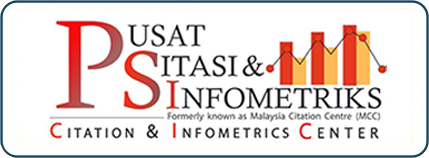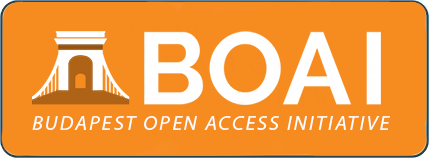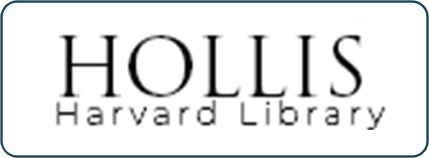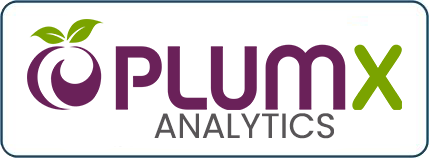Beyond Charity
A Comparative Analysis on Waqf and Social-Based Healthcare Institutions in Malaysia
DOI:
https://doi.org/10.33102/jmifr.574Keywords:
Waqf healthcare, Social-based healthcare, SustainabilityAbstract
Waqf and social-based healthcare institutions have existed for more than 150 years and were derived from the social economy concept, which emphasises social innovation in the economy. While Muslims are well-known for developing waqf, other religions, particularly Christianity, used philanthropic methods to create a diverse range of institutions that benefit the community. However, the three distinctive features prescribed by the Shariah law to prevent waqf assets from being sold or transferred to other parties have distinguished waqf from other institutions. The abundance of challenges in the economic and health sectors has threatened the sustainability of waqf and other social-based healthcare. Thus, this research aims to explore the philosophies underlying the establishment of each waqf and social-based healthcare institution through a qualitative methodology involving an in-depth investigation. Six of the fifteen identified waqf and social-based healthcare institutions participated in the interviews, and the transcripts were then analysed inductively using the NVivo software. Each code and theme produced is based on the conceptual framework that has been formed. The themes were compared to observe the similarities and differences in terms of the institutions’ background and philosophy of the establishment. The findings of this research reveal that despite the crucial roles of waqf healthcare institutions, the fact remains that they are still far behind in fulfilling the healthcare needs of the Muslim community. Meanwhile, the analysis of the institutions’ background philosophy revealed that the establishment of waqf and social-based healthcare is motivated by religion.
Downloads
References
Ab Rahman, A. (2009). Peranan wakaf dalam pembangunan ekonomi umat Islam dan aplikasinya di Malaysia. Jurnal Syariah, 17(1), 113–152. https://ejournal.um.edu.my/index.php/JS/article/view/22746
Al-Ansari, M. (2013). Bīmāristāns and waqf in Islam: Case studies of hospital endowment during 9th to 13th century ce in the Muslim World [Bachelor’s Thesis, University of Sydney]. Acedemia.edu. https://Www.Academia.Edu/6955050/B%C4%Abm%C4%81rist%C4%81ns_And_Waqf_In_Islam_Case_Studies_Of_Hospital_Endowment_During_9th_To_13th_Century_CE_In_The_Muslim_World
Aljunid, S. (1995). The role of private medical practitioners and their interactions with public health services in Asian countries. Health Policy and Planning, 10(4), 333–349. https://doi.org/10.1093/heapol/10.4.333
Atan, N. A. B. (2016, October 19–20). Waqf as a risk pooling method for the poor and low-income household in funding the healthcare cost [Paper presentation]. 11th ISDEV International Graduate Workshop (INGRAW2016), Universiti Sains Malaysia, Penang.
Atan, N. A. B. (2022). Developing a sustainability framework for waqf-based healthcare: A comparative analysis among social-based healthcare institutions in Malaysia [Doctoral dissertation, Universiti Sains Islam Malaysia]. USIM Research Repository. https://oarep.usim.edu.my/jspui/handle/123456789/15858
Avelino, F., Wittmayer, J. M., Pel, B., Weaver, P., Dumitru, A., Haxeltine, A., Kemp, R., Jørgensen, S., M., Bauler, T., Ruijsink, S., & O’Riordan, T. (2019). Transformative social innovation and (dis) empowerment. Technological Forecasting and Social Change, 145, 195–206. https://doi.org/10.1016/j.techfore.2017.05.002
Azmi, A. S. M., Hanif, N. R., Mahamood, S. M., & Ali, S. N. M. (2019). Synthesizing the maqasid al-Syariah for the waqf property development. IOP Conference Series: Earth and Environmental Science, 385, 1–7. https://doi.org/10.1088/1755-1315/385/1/012051
Ballesteros, L., & Gatignon, A. (2019). The relative value of firm and nonprofit experience: Tackling large‐scale social issues across institutional contexts. Strategic Management Journal, 40(4), 631–657. https://doi.org/10.1002/smj.2968
Bayliss, K., & Van Waeyenberge, E. (2018). Unpacking the public private partnership revival. The Journal of Development Studies, 54(4), 577–593. https://doi.org/10.1080/00220388.2017.1303671
Bird, M., McGillion, M., Chambers, E. M., Dix, J., Fajardo, C. J., Gilmour, M., Levesque, K., Lim, A., Mierdel, S., Ouellette, C., Polanski, A. N., Reaume, S. V., Whitmore, C., & Carter, N. (2021). A generative co-design framework for healthcare innovation: development and application of an end-user engagement framework. Research involvement and engagement, 7(1), 1–12. https://doi.org/10.1186/s40900-021-00252-7
Bird, M., Ouellette, C., Whitmore, C., Li, L., Nair, K., McGillion, M. H., Yost, J., Banfield, L., Campbell, E., & Carroll, S. L. (2020). Preparing for patient partnership: A scoping review of patient partner engagement and evaluation in research. Health expectations: an international journal of public participation in health care and health policy, 23(3), 523–539. https://doi.org/10.1111/hex.13040
Cajaiba-Santana, G. (2014). Social innovation: Moving the field forward. A conceptual framework. Technological forecasting and social change, 82, 42–51. https://doi.org/10.1016/j.techfore.2013.05.008
Cameron, D., Ubels, J., & Norström, F. (2018). On what basis are medical cost-effectiveness thresholds set? Clashing opinions and an absence of data: a systematic review. Global health action, 11(1), 1–14. https://doi.org/10.1080/16549716.2018.1447828
Chalcraft, D. J., & Harrington, A. (Eds.). (2001). The Protestant ethic debate Max Weber’s replies to his critics, 1907-1910. Liverpool University Press. https://doi.org/10.5949/upo9781846313868
Clegg, S., Kornberger, M., & Pitsis, T. (2005). Managing and organizations: An introduction to theory and practice. SAGE Publications.
Coast, J. (2004). Is economic evaluation in touch with society’s health values? BMJ, 329(7476), 1233–1236. https://doi.org/10.1136/bmj.329.7476.1233
Dafterdar, M. H. (2011). Toward effective legal regulations and an enabling environment for inalienable Muslim endowments. ICR Journal, 2(4), 654–668. https://doi.org/10.52282/icr.v2i4.604.
Eisenhardt, K. M. (1989). Building theories from case study research. Academy of management review, 14(4), 532–550. https://doi.org/10.2307/258557
Eisenhardt, K. M. (2021). What is the Eisenhardt Method, really? Strategic Organization, 19(1), 147–160. https://doi.org/10.1177/1476127020982866
Farhat Nazirul Mubin, B. (2015, December 8–9). The potential of healthcare waqf in Malaysia. Proceedings of IDMAC 2015, 9th ISDEV International Islamic Development Management Conference, 282–305. https://www.Slideshare.Net/Idmac2015/Farhat-Nazirul-Mubin
Fauzi, M., Efendi, F., Bundo, M., Eriawati, Y., & Rahmat, F. (2023). Tinjauan literatur terkini tentang wakaf. Jurnal Iqtisaduna, 9(2), 232–252. https://doi.org/10.24252/iqtisaduna.v9i2.41811
Fougère, M., Segercrantz, B., & Seeck, H. (2017). A critical reading of the European Union’s social innovation policy discourse: (Re) legitimizing neoliberalism. Organization, 24(6), 819–843. https://doi.org/10.1177/1350508416685171
Gee, I. H., Nahm, P. I., Yu, T., & Cannella, A. A. (2023). Not-for-profit organizations: A multi-disciplinary review and assessment from a strategic management perspective. Journal of Management, 49(1), 237–279. https://doi.org/10.1177/01492063221116581
George, M. (2001). Corporate philanthropy and social responsibility in Latin America: An overview of issues in charity litigation in Malaysia 2001. The International Journal of Not-for-Profit Law, 4(1). https://www.icnl.org/resources/research/ijnl/an-overview-of-issues-in-charity-litigation-in-malaysia-2001-2
Gerber, L. (1983). Hospital restructuring: Why, when & how. Pluribus Press.
Glaser, B., & Strauss, A. (1999). Discovery of grounded theory: Strategies for qualitative research (1st ed.). Routledge. https://doi.org/10.4324/9780203793206
Green, A. (1987). The role of non‐governmental organizations and the private sector in the provision of health care in developing countries. The International Journal of Health Planning and Management, 2(1), 37–58. https://doi.org/10.1002/hpm.4740020106
Hansmann, H. B. (1980). The role of nonprofit enterprise. The Yale Law Journal Company, 89(5), 835–901. https://doi.org/10.2307/796089
Hassan, R., & Jamaluddin, K. F. (2022). Waqf to support healthcare well-being mission: the proposed model for corporate waqf for healthcare (CWFH). In Hassan, M.K., Muneeza, A. and Sarea, A.M. (Ed.), Towards a Post-Covid Global Financial System: Lessons in Social Responsibility from Islamic Finance (pp. 129–142). Emerald Publishing Limited. https://doi.org/10.1108/978-1-80071-625-420210007
Holmes, E. A., Brown, R. J., Mansell, W., Fearon, R. P., Hunter, E. C., Frasquilho, F., & Oakley, D. A. (2005). Are there two qualitatively distinct forms of dissociation? A review and some clinical implications. Clinical psychology review, 25(1), 1–23. https://doi.org/10.1016/j.cpr.2004.08.006
Johari, F., & Ibrahim, P. (2010). The dynamism in the implementation of al-Kharaj during the Islamic rule (634-785AD). Jurnal Syariah, 18(3), 629–658. https://ejournal.um.edu.my/index.php/JS/article/download/22658/11249/49095
Joudyian, N., Doshmangir, L., Mahdavi, M., Tabrizi, J. S., & Gordeev, V. S. (2021). Public-private partnerships in primary health care: a scoping review. BMC health services research, 21(4), 1–18. https://doi.org/10.1186/s12913-020-05979-9
Juni, M. H. B. (1996). Public health care provisions: Access and equity. Social Science & Medicine, 43(5), 759–768. https://doi.org/10.1016/0277-9536(96)00120-7
Kahf, M. (2003, January 6–7). The role of waqf in improving the ummah welfare [Paper presentation]. The International Seminar on Waqf as a Private Legal Body, Islamic University of north Sumatra, Medan, Indonesia. https://monzer.kahf.com/papers/english/ROLE_OF_WAQF_IN_THE_WELFARE_OF_THE_UMMAH.pdf
Kay, A. (2006). Social capital, the social economy and community development. Community development journal, 41(2), 160–173. https://doi.org/10.1093/cdj/bsi045
Kleinert, S., & Horton, R. (2017). From universal health coverage to right care for health. The Lancet, 390(10090), 101–102. https://doi.org/10.1016/S0140-6736(16)32588-0
Knight, G. A., & Cavusgil, S. T. (2004). Innovation, organizational capabilities, and the born-global firm. Journal of international business studies, 35, 124–141. https://doi.org/10.1057/palgrave.jibs.8400071
Laldin, M. A., Mahmud, M. W., & Sawari, M. F. (2006). Maqasid Syari’ah dalam pelaksanaan wakaf. In Abdul Majid, M. Z. A. M., Mahmud, M. W., & Abdul Aziz, A. Z. A. A. (Eds.), Maqasid Al-Syari’ah (pp. 259–290). IIUM Press. http://irep.iium.edu.my/28549/1/Maqasid_Waqaf.pdf
Laokri, S., Weil, O., Drabo, K. M., Dembelé, S. M., Kafando, B., & Dujardin, B. (2013). Removal of user fees no guarantee of universal health coverage: observations from Burkina Faso. Bulletin of the World Health Organization, 91, 277–282. https://doi.org/10.2471/BLT.12.110015
Latif, S. A., Din, N. M. N., & Mustapha, Z. (2018). The role of good waqf governance in achieving sustainable development. Environment-Behaviour Proceedings Journal, 3(7), 113–118. https://doi.org/10.21834/e-bpj.v3i7.1292
Laville, J. L., Young, D. R., & Eynaud, P. (Eds.). (2015). Civil society, the third sector and social enterprise: Governance and democracy (1st ed.). Routledge. https://doi.org/10.4324/9781315795317
Lēv, Y., & Lēv, Y. (2005). Charity, endowments, and charitable institutions in medieval Islam. Univ. Press of Florida.
Luo, J., & Kaul, A. (2018). Private action in public interest: The comparative governance of social issues. Strategic Management Journal, 40(4), 476–502. https://doi.org/10.1002/smj.2961
Mahmud, M. W., & Shah, S. S. (2010). Optimization of philanthropic waqf: The need for Maqasid-based legislative strategies. Shariah Law Reports, 2, 45–59. http://irep.iium.edu.my/6791/
Mannion, R., & Small, N. (1999). Postmodern health economics. Health Care Analysis, 7, 255–272. https://doi.org/10.1023/A:1009400926449
Mathialagan, R., & Kuthambalayan, T. S. (2023). Sustainable value co-creation in healthcare systems in the context of reduced ease of access. Journal of Cleaner Production, 422. https://doi.org/10.1016/j.jclepro.2023.138545
Merriam, S. B. (2015). Qualitative research: Designing, implementing, and publishing a study. In V. Wang (Ed.), Handbook of research on scholarly publishing and research methods (pp. 125–140). IGI Global. https://doi.org/10.4018/978-1-4666-7409-7.ch007
Mohamed, N., Daud, H., & Ab Rahman, A. (2015). Wakaf Penjagaan Kesihatan: Kajian Kes di Hospital Waqaf An-Nur. Jurnal Syariah, 23(3), 401–434. https://doi.org/10.22452/js.vol23no3.3
Moshiri, H., Aljunid, S. M., & Amin, R. M. (2010). Hospital efficiency: Concept, measurement techniques and review of hospital efficiency studies. Malaysian Journal of Public Health Medicine, 10(2), 35–43. https://search.bvsalud.org/gim/resource/fr/wpr-626532
Moulaert, F., & Ailenei, O. (2005). Social economy, third sector and solidarity relations: A conceptual synthesis from history to present. Urban studies, 42(11), 2037–2053. https://doi.org/10.1080/00420980500279794
Moulaert, F., & MacCallum, D. (2019). Advanced introduction to social innovation. Edward Elgar Publishing. https://doi.org/10.4337/9781785360381
Nur Sa’adah, M. (2016). Transformative social service of organizations: Strategies and process of development [Doctoral dissertation, Universiti Kebangsaan Malaysia]. UKM Learning and Research Repository. https://ptsldigital.ukm.my/jspui/handle/123456789/513659
Olsen, I. T. (1998). Sustainability of health care: a framework for analysis. Health policy and planning, 13(3), 287–295. https://doi.org/10.1093/heapol/13.3.287
Pannarunothai, S., Patmasiriwat, D., & Srithamrongsawat, S. (2004). Universal health coverage in Thailand: Ideas for reform and policy struggling. Health Policy, 68(1), 17–30. https://doi.org/10.1016/S0168-8510(03)00024-1.
Pel, B., Haxeltine, A., Avelino, F., Dumitru, A., Kemp, R., Bauler, T., Kunze, I., Dorland, J., Wittmayer, J., & Jørgensen, M. S. (2020). Towards a theory of transformative social innovation: A relational framework and 12 propositions. Research Policy, 49(8), 1–13. https://doi.org/10.1016/j.respol.2020.104080
Pol, E., & Ville, S. (2009). Social innovation: Buzz word or enduring term? The Journal of socio-economics, 38(6), 878–885. https://doi.org/10.1016/j.socec.2009.02.011
Razali, O. (2014). Penggunaan wang dalam wakaf tunai: Satu penilaian semula. In Sunarko, B. S., & Bahari, Z. (Eds.), Konferensi Internasional Pembangunan Islami - I (pp. 243–268). https://ejournal.um.edu.my/index.php/JS/article/download/22746/11291/49308
Reeves, A., McKee, M., & Stuckler, D. (2015). The attack on universal health coverage in Europe: recession, austerity and unmet needs. The European Journal of Public Health, 25(3), 364–365. https://doi.org/10.1093/eurpub/ckv040
Roemer, M. I. (1984). Private medical practice: Obstacle to health for all. World Health Forum, 5(3), 195–210. https://apps.who.int/iris/handle/10665/49243
Sago, D. B. (1989). The relationship between marketing effectiveness and fund raising at institutions of higher education [Doctoral dissertation, United States International University]. ProQuest Dissertations & Theses Global. https://www.proquest.com/docview/303732697
Sahakian, M. D., & Dunand, C. (2015). The social and solidarity economy towards greater ‘sustainability’: Learning across contexts and cultures, from Geneva to Manila. Community development journal, 50(3), 403–417. https://doi.org/10.1093/cdj/bsu054
Salamon, L. M. (1999). The nonprofit sector at a crossroads: The case of America. International Journal of Voluntary and Nonprofit Organizations, 10(1), 5–23. https://doi.org/10.1023/A:1021435602742
Saleh, S. S., Alameddine, M. S., Natafgi, N. M., Mataria, A., Sabri, B., Nasher, J., Zeiton, M., Ahmad, S. & Siddiqi, S. (2014). The path towards universal health coverage in the Arab uprising countries Tunisia, Egypt, Libya, and Yemen. The Lancet, 383(9914), 368–381. https://doi.org/10.1016/S0140-6736(13)62339-9
Salleh, A. H. M., Mohamad, N. S., & Adham, K. A. (2014). Managing Waqf for Societal Well-Being (1st ed.). Penerbit Universiti Putra Malaysia.
Samad, R. R. (2018). Developing a Shariah framework for cooperative banks in Malaysia [Doctoral dissertation, Universiti Sains Islam Malaysia]. USIM Repository. https://oarep.usim.edu.my/
Sanadgol, A., Doshmangir, L., Majdzadeh, R., & Gordeev, V. S. (2021). Engagement of non-governmental organizations in moving towards universal health coverage: A scoping review. Globalization and health, 17(129), 1–19. https://doi.org/10.1186/s12992-021-00778-1
Sarkar, S., & Mateus, S. (2022). Doing more with less-How frugal innovations can contribute to improving healthcare systems. Social Science & Medicine, 306, 1–12. https://doi.org/10.1016/j.socscimed.2022.115127
Sekaran, U. (2003). Research Methods for Business: A Skill Building Approach (4th ed.). John Wiley and Sons.
Sekaran, U., & Bougie, R. (2009). Research methods for business: A skill-building approach (5th ed.). Wiley.
Serrano, N., Realmuto, L., Graff, K. A., Hirsch, J. A., Andress, L., Sami, M., ... & Devlin, H. M. (2023). Healthy community design, anti-displacement, and equity strategies in the USA: A scoping review. Journal of Urban Health, 100, 151–180. https://doi.org/10.1007/s11524-022-00698-4
Small N, & Mannion R. (2005). A hermeneutic science: Health economics and Habermas. Journal of Health Organization and Management, 19(3), 219–235. https://doi.org/10.1108/14777260510608952
Tangcharoensathien, V., Patcharanarumol, W., Ir, P., Aljunid, S. M., Mukti, A. G., Akkhavong, K., Banzon, E., Huong, D., B., Thabrany, H. & Mills, A. (2011). Health-financing reforms in southeast Asia: challenges in achieving universal coverage. The Lancet, 377(9768), 863–873. https://doi.org/10.1016/S0140-6736(10)61890-9
Thaidi, H.’ Azeemi, Nazarie, W. N. F. W., Nazarie, A. R. Z., & Mohd Mahyeddin Mohd Salleh. (2021). Integrasi Takaful Mikro dan Wakaf Ketika Pandemik: Analisis Potensi dan Cabaran. Ulum Islamiyyah, 33(3), 135–150. https://uijournal.usim.edu.my/index.php/uij/article/view/439
Tuckman, H. P., & Chang, C. F. (2006). Commercial activity, technological change, and nonprofit mission. In G. Sonnevi, The nonprofit sector: A research handbook (pp. 629–644). Yale University Press. https://doi.org/10.12987/9780300153439-030
Turner, H. R. (2010). Science in Medieval Islam: An Illustrated Introduction. University of Texas Press.
Wang, J. Y., Wang, C. Y., Juang, S. Y., Huang, K. Y., Chou, P., Chen, C. W., & Lee, C. C. (2014). Low socio-economic status increases short-term mortality of acute myocardial infarction despite universal health coverage. International Journal of Cardiology, 172(1), 82–87. https://doi.org/10.1016/j.ijcard.2013.12.082.
Weerawardena, J., McDonald, R. E., & Mort, G. S. (2010). Sustainability of nonprofit organizations: An empirical investigation. Journal of World Business, 45(4), 346–356. https://doi.org/10.1016/j.jwb.2009.08.004
Wolpert, J., & Reiner, T. (1985). The not-for-profit sector in stable and growing metropolitan regions. Urban Affairs Quarterly, 20(4), 487–510. https://doi.org/10.1177/004208168502000406
Yin, R. K. (1994). Case study research: Design and methods (2nd ed.). Sage Publications.
Zakaria, A. A. M., Samad, A. R. R., & Shafii, Z. (2012). Venture philanthropy-waqf practices and its implementation: Scenario in Malaysia. International Journal of Business, Economics and Law, 1, 108–115. http://ijbel.com/wp-content/uploads/2014/06/Venture-Philanthropy-%E2%80%93-Waqf-Practices-And-Its-Implementation-Scenario-In-Malaysia-Azliza-Azrah-Mohd-Zakaria-Rose-Ruziana-Abd.-Samad-Assoc.Prof_.-Dr.-Zurina-Shafii.pdf
Downloads
Published
How to Cite
Issue
Section
License
Copyright (c) 2024 Nur Atika Atan, Rose Ruziana Samad, Fuadah Johari, Zurina Kefeli

This work is licensed under a Creative Commons Attribution 4.0 International License.















